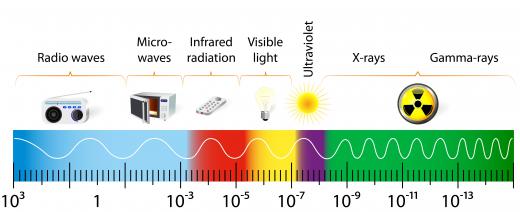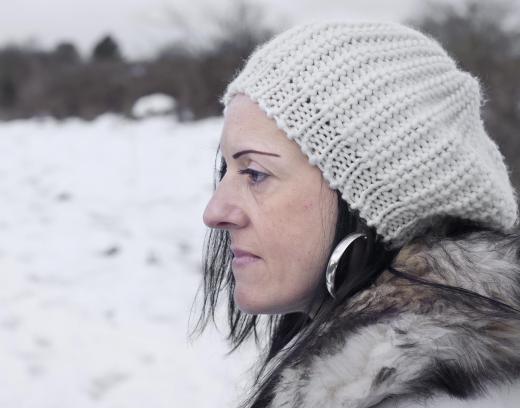What is the Visible Spectrum?
The visible light spectrum is a range of light that is visible to the human eye, and is responsible for the colors we see. The spectrum is made up of light waves ranging from approximately 700 nanometers to 400 nanometers. Outside of this visible light spectrum, at the lower end of the frequencies, is infrared light. At the higher end, the invisible light is known as ultraviolet.
On the visible light spectrum itself, each color seen by the human eye represents a slightly different wavelength of light, and major divisions of those wavelengths can be seen as a rainbow. In physics, a wavelength is defined as the distance from a point along the wave to the next similar point, usually measured between crests or troughs. A wavelength at the lower end will be a shade of red. In the middle, the wavelengths will be represented as green or blue, and at the high end by a shade of violet.

White light results when all wavelengths of the visible spectrum are combined together. It is the most common form of visible light. Black, of course, is the absence of visible light. White light can be split and separated into various wavelengths, or the light can be absorbed and reflected back at only certain wavelengths.
The reflection of certain wavelengths along the visible spectrum is how colors are most commonly seen. For example, if a person is looking at a book with a red cover, they are actually seeing a reflection of red light waves being directed back to them. The other wavelengths on the visible spectrum are being absorbed into the book cover. Only the red, which is a lower frequency wavelength, is being returned to the viewer. If the book cover were black, it would mean no waves on the visible spectrum were being reflected.

While there are things such as infrared detectors and ultraviolet light that reveals images people can view, these do not truly enable humans to see beyond the visible spectrum. Rather, these tools simply provide a visible spectrum equivalent, using false color images. This helps individuals understand that there are other wavelengths of light in the universe that cannot be seen, and can also help explain things like weather patterns and astronomical observations. Such techniques are also used in forensic science to reveal organic material that otherwise could not be seen.

Though some forms of light fall outside the visible spectrum, it does not mean they do not have an impact on living organisms. For example, ultraviolet light is often responsible for causing sunburn and skin damage, but can also be helpful as well. Ultraviolet light is often used to treat seasonal affective disorder in humans, and is used in plant nurseries to promote growth of vegetation.
AS FEATURED ON:
AS FEATURED ON:














Discuss this Article
Post your comments